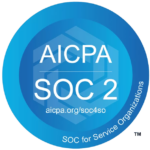Featured this week
Glycerin
SodGlycerin is a simple polyol compound that is colourless and odourless. It is a viscous sweet-tasting liquid; it is about 0.6 times sweeter than cane sugar. It is soluble in water and alcohol and has a boiling point of 290° C. It is generally obtained from plant or animal matter. Examples include soybean or palm or animal-derived tallow, respectively. It is non-toxic and it is not classified as a Dangerous Good. [1,2]
Download the whole PDF below
Featured Articles
Japan considers extension to PFOA ban
Japan’s government is considering allowing some exemptions from the upcoming ban on the use of perfluorooctanoic acid (PFOA) and its related compounds, in response to industry feedback. The ban was due to come into force in April this year, but the Ministry of Health, Labour and Welfare (MHLW) delayed the start date, citing comments from a public consultation that closed in late 2019. The government has now restated its intention to reclassify PFOA and its compounds as Class 1 specified substances by 3 December 2020. This class of chemicals is effectively banned from manufacture and import because of their persistent, bioaccumulative and toxic effects. The new ban date coincides with the implementation of amendments to the Stockholm Convention, which oblige Japan and other signatory countries to stop using PFOA except in certain listed applications with no available substitutes. New exemptions for PFOA The original proposal allowed manufacturers to continue using PFOA in certain pharmaceutical applications. But industry has called for additional exemptions to allow its use in photoresists for the semiconductor industry and in invasive and implantable medical devices. The government is now considering allowing these uses. Feedback also highlighted uncertainty among industry and consumer groups over how the ban will apply to polytetrafluoroethylene (PTFE, also known by the trade name Teflon) and other products that might degrade to form PFOA as a byproduct. In response to NGO calls for frying pans and waterproofing sprays to require labels indicating the products contain PFOA, the government said this should not be necessary if the substance is effectively eliminated as a byproduct. But it said it would revisit the subject at a later date. Manufacturers and users of PTFE micropowders expressed concerns about the small amounts of PFOA that are produced during manufacture and whether this would make the materials subject to ban. PTFE micropowders are widely used in printing inks, coatings, paints, elastomers and lubricants. The government has said that PFOA produced as a byproduct will not be treated as a Class 1 specified substance if adequate measures are taken to reduce its levels. Need for limits Other comments point to the need for a standard on PFOA to outline the maximum amount in a mixture that would see the mixture controlled as a Class 1 specified substance. The EU’s REACH regulation sets a limit for trace contamination of 25 parts per billion, but NGOs have argued that this limit is too high. The Japanese government has deferred setting a similar limit, citing a lack of agreement on a standard value under the Stockholm Convention. Instead, the government refers to the Ministry of Economy, Trade and Industry (Meti) guidance on handling chemical substances containing byproduct Class I specified chemical substances. Companies that become aware of small amounts of a Class 1 specified substance in their products through analysis must immediately set a provisional upper limit for voluntary control and report measures to reduce its content to the government. Relevant documents should be submitted to the Ministry of Health, Labour and Welfare, Meti and the environment ministry for further consideration. The ministries are now accepting submissions of documents related to PFOA ahead of its reclassification. Proposed timeline after June 2020 – public consultation on the draft law; December 2020 – designation of the substances as Class I specified chemical substances; and after December 2020 – restrictions expected to be implemented.
https://chemicalwatch.com/108006/japan-considers-exemptions-to-pfoa-ban#overlay-strip
Mexico to tackle lead in glazed pottery, other consumer products
Mexico is set to publish a revised standard on lead in glazed pottery this year, as part of a plan to control the toxic metal’s presence in consumer products. Pottery in Mexico is typically fired at low temperatures and coated with a glaze made of lead and other minerals. Lead has been the preferred choice for artisanal potters for centuries, because it will fuse at much lower temperatures than alternatives require. The negative health effects of this practice were highlighted in a 2017 study, which found that around 200 micrograms per litre (μg/L) of lead leached from pottery into the food and water cooked and stored within it. The US banned pottery imports from Mexico that aren’t labelled ‘lead-free’ two decades ago. But despite efforts by NGOs and the government to encourage lead-free substitutes, pottery has been flagged in the Mexican health authority’s national chemicals policy proposal as “one of the [population’s] main sources of exposure to this heavy metal”. The health authority says “research currently available nationwide” estimates that one million Mexican children under the age of five have lead poisoning, according to the health authority. This equates to one in 11 children under five in the country. Enforcement challenges The 2016 standard on glazed pottery currently in place sets maximum migration limits for lead, ranging from 2 milligrams per litre (2mg/L) for small hollow jars to 0.5 mg/L for pieces that will come into contact with food or drinks. But this standard is “useless and ineffective”, according to Sofía Chávez Arce, director of the NGO Casa CEM, because it sets migration limits instead of total lead content limits, which “might” protect the end user, but won’t help the workers involved in manufacturing, or their families and surrounding communities. Additionally, with tens of thousands of artisanal family pottery shops in the country, “surveillance is impossible”. The government is also battling with a long-established tradition. It has tried to promote a boron-based alternative to the lead glaze, but many potters still prefer lead. The health authority’s proposal did not outline what its new standard or law will look like, but said it expects to publish it this year. Ms Chávez says it should set limits for total lead content in pottery instead of migration limits, and it should address the lead oxide supply chain that supplies the trade. ‘Confusing’ standards Several different standards regulate lead in consumer products in Mexico (see box), but there is no overarching law or regulation. “I think all lead limit standards should be reviewed for inconsistencies … and set into one comprehensive law,” Ms Chávez said. “As of now they are very confusing, some [are] obsolete and some contradictory.” A lack of surveillance and enforcement are also massive problems, she added. Pottery is the health authority’s first priority, followed by updating standards on lead paint used in children’s toys and games and then paint used in homes, according to its proposal. The proposal also sets out plans for a national chemicals law that would place the burden of proof on companies to show substances they import or use in the country are safe, and would allow the government to restrict or ban those that pose an “unacceptable risk”. Lead in consumer products A number of Mexican standards have been set for lead in consumer products in recent years, including: NOM-003-SSA1-2006, published 4 August 2010: prohibits paints with a lead content higher than 600 parts per million (ppm), and sets out labelling requirements for leaded paints; NOM-252-SSA1-2011, published 15 May 2012: sets migration limit of 90 mg/kg for lead in toys and school supplies, as well as limits for other heavy metals; NOM-004-SSA1-2013, published 2 May 2014: says the use of lead compounds “should be avoided” in paints, coatings, inks, glazed pottery and cosmetics. NOM-231-SSA1-2016, published 25 October 2016: sets migration limits for lead and cadmium in pottery. For lead, limits range from 2 mg/L for flat pieces and small hollow jars to 0.5 mg/L for pieces that will come into contact with food or drinks
https://chemicalwatch.com/108070/mexico-to-tackle-lead-in-glazed-pottery-other-consumer-products
Polyurethane-eating bacteria to degrade hard-to-recycle plastic products
The researchers from Helmholtz Centre for Environmental Research-UFZ have identified and characterized a strain of bacteria capable of degrading some of the chemical building blocks of polyurethane. The bacteria can use these compounds as a sole source of carbon, nitrogen and energy. This finding represents an important step in being able to reuse hard-to-recycle PU products. Bacterium Pseudomonas sp. TDA1 The team out of Germany managed to isolate a bacterium, Pseudomonas sp. TDA1, from a site rich in brittle plastic waste that shows promise in attacking some of the chemical bonds that make up polyurethane plastics. The researchers performed a genomic analysis to identify the degradation pathways at work. They made preliminary discoveries about the factors that help the microbe metabolize certain chemical compounds in plastic for energy. They also conducted other analyses and experiments to understand the bacterium’s capabilities. High Solvent-tolerance This strain is part of a group of bacteria that are well-known for their tolerance of toxic organic compounds and other forms of stress, according to Dr. Christian Eberlein with the Helmholtz Centre for Environmental Research-UFZ. He is a co-author on the paper who coordinated and supervised the work. “That trait is also named solvent-tolerance and is one form of extremophilic microorganisms,” Eberlein said. P4SB Consortium to Bioconvert Oil-based Plastics The research is part of a European Union scientific program dubbed P4SB (From Plastic waste to Plastic value using Pseudomonas putida Synthetic Biology), which is attempting to find useful microorganisms that can bioconvert oil-based plastics into fully biodegradable ones. As the name implies, the project has focused on a bacterium known as Pseudomonas putida. In addition to polyurethane, the P4SB consortium, which includes the Helmholtz Centre for Environmental Research-UFZ, is also testing the efficacy of microbes to degrade plastics made of polyethylene terephthalate (PET), which is widely used in plastic water bottles. Coding Extracellular Enzymes in Future Dr. Hermann J. Heipieper, a senior scientist at the Helmholtz Centre for Environmental Research-UFZ, said “the first step of any future research on Pseudomonas sp. TDA1 will be to identify the genes that code for the extracellular enzymes that are capable of breaking down certain chemical compounds in polyester-based polyurethanes. Extracellular enzymes, also called exoenzymes, are proteins secreted outside of a cell that cause a biochemical reaction.” “However, there is no immediate plan to engineer these or other enzymes using synthetic biology techniques for bioplastic production. That could involve, for instance, genetically converting the bacteria into mini-factories capable of transforming oil-based chemical compounds into biodegradable ones for planet-friendly plastics.” Heipieper said “more “fundamental knowledge” like the one gathered in the current study is needed before scientists can make that technological and commercial leap.”
https://omnexus.specialchem.com/








